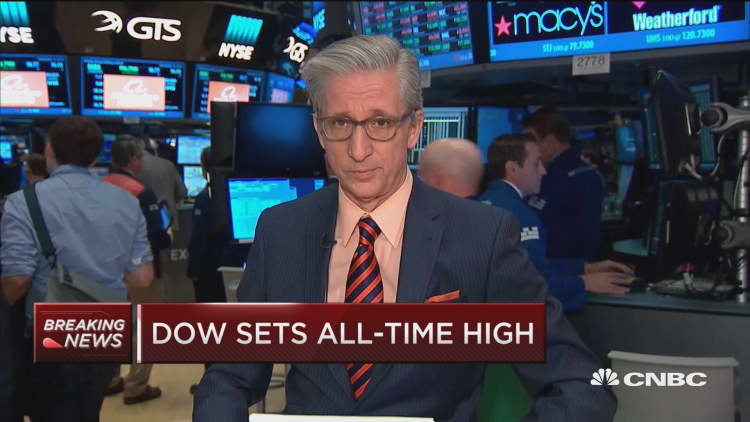
After moving 100 points in the S&P 500 in a little more than three days, markets are taking a pause.
And with good reason. The sectors that are benefiting from the perception of less regulatory scrutiny — banks, health care, and to a lesser extent energy—are still up, but sectors that are being hit by concerns on higher interest rates (telecom, real estate, utilities) or trade concerns (technology) are trading down.
There is now a new trading mentality around the Trump victory.
It can be expressed several ways, but two simple ways to look at it is this:
- The reflation trade: Buy into sectors that will benefit from reduced regulation and fiscal stimulus: energy, materials, industrials, and banks and out of internet, media, some tech, and interest-rate sensitive groups like telecom and utilities.
- Flip the low volatility trade: Low-volatility stocks like consumer staples were all the rage earlier in the year on a slow-growth trade. Now buy into old-school growth (financials, energy, industrials) and out of consumer staples. This trade can be partially expressed by going long the PowerShares High Beta ETF, up 8.8 percent this week, and shorting the PowerShares Low Volatility ETF, up only 0.6 percent this week.
Marko Kolanovic, JPMorgan's quantitative derivatives analyst, was one of several analysts to note the new trading mentality in a note to clients: "[We] think that pro-growth policies will be implemented with priority, and the equity market may start pricing them in regardless of specific timing. This should be supportive of equity prices that are likely to reach new highs."
The problem, of course, is that markets can only go so far without seeing specific legislation. We may be approaching a limit to how far banks and pharmaceuticals, for example, can go without specific legislation on a stimulus program (how big?), regulations (repeal Obamacare? What changes to Dodd-Frank?), trade, or tax reform (individual or corporate).
It's a strange day — you don't usually see the S&P down 0.2 percent and the Dow up 0.7 percent. That's partly because the Dow is price-weighted, not market cap weighted like the S&P 500, and the most expensive stocks in the Dow are beneficiaries of the Trump victory — those who would benefit from less regulation (banks like Goldman — $196), infrastructure (Home Depot — $129, 3M — $172, United Technologies — $107), and higher interest rates (Travelers — $107).
Finally, several market watchers have asked me how the markets could rally on Monday on perceptions of a Clinton victory, but then rally on Wednesday on the reality of a Trump victory.
The easiest explanation is this: The markets value stability over volatility, certainty over uncertainty, and Clinton represented stability and certainty. Would the markets have continued to rally had Clinton been elected? I don't know, but it is certainly unlikely there would have been the kind of rallies we have seen in financials, health care, and energy, all sectors that would have come under increased regulatory scrutiny under a Clinton administration.


